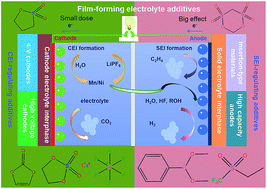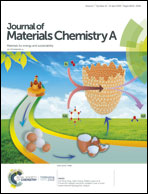Film-forming electrolyte additives for rechargeable lithium-ion batteries: progress and outlook
Abstract
Lithium-ion batteries (LIBs) have become one of the most prevalent techniques for feasible and fascinating energy storage devices used in portable electronics and electric vehicles; however, they still face a significant challenge due to the complicated electrode–electrolyte interface (EEI), which is closely related to the chemical/electrochemical instability of high-capacity high-voltage electrodes and electrolytes. In particular, the decomposition of an electrolyte on the electrode surface is unambiguously regarded as a crucial controlling factor for the obtainable capacity, rate capacity, and interfacial chemistries of batteries. Previously, significant efforts have been devoted toward modifying the EEI with remarkable progress. The incorporation of a small dose of foreign molecules, called film-forming additives, is regarded as one of the most economical and effective approaches to circumvent these predicaments. In this regard, this review provides an overview of various film-forming additives used for classified anodes and cathodes, aiming at emphasizing the state-of-the-art developments in the electrolyte research. Moreover, the authors intend to help the readers arouse new ideas and easily identify the additives suitable for their target materials, paving the way for greater progress in the lithium-ion battery community.

- This article is part of the themed collection: Recent Review Articles


 Please wait while we load your content...
Please wait while we load your content...